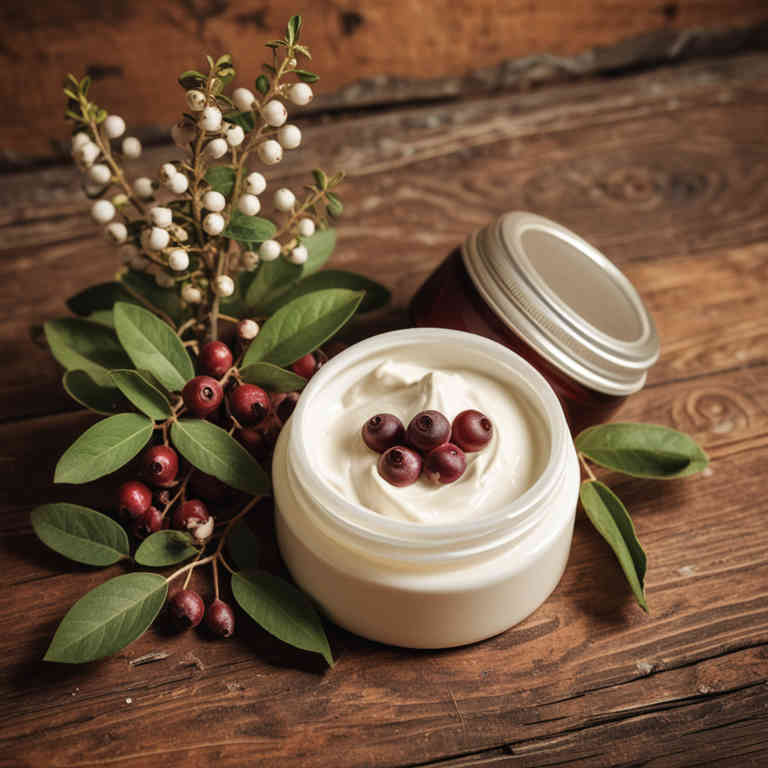Vaccinium myrtillus cream for medicinal use

Vaccinium myrtillus cream is a topical herbal preparation made from the berries of the bilberry plant, which is known for its high concentration of antioxidants and anthocyanins.
This cream is used in herbalism to support skin health, reduce inflammation, and promote healing of minor wounds and irritations. It is often applied directly to the skin to alleviate conditions such as eczema, psoriasis, and minor burns. The active compounds in bilberries help to strengthen blood vessels and improve circulation, making it beneficial for skin repair.
Herbalists also recommend it for its potential protective effects against UV damage and its soothing properties for sensitive skin.
Uses
Vaccinium myrtillus cream has been used to treat various skin conditions and inflammatory disorders for centuries.
Historically, the plant, commonly known as bilberry, was used in traditional medicine by indigenous peoples of Europe and North America for its healing properties. In traditional practices, it was applied topically to soothe wounds, reduce inflammation, and improve skin health. Modern research has supported some of these uses, showing potential benefits for skin repair and antioxidant activity.
Today, it is often found in skincare products aimed at promoting healing and protecting the skin from environmental damage.
Benefits
Vaccinium myrtillus cream has health benefits such as promoting skin healing, reducing inflammation, and providing antioxidant protection.
This cream is derived from the bilberry plant, which is rich in anthocyanins and other bioactive compounds. It is commonly used to treat minor skin irritations, wounds, and conditions like eczema or psoriasis. The antioxidants in the cream help neutralize free radicals, supporting overall skin health.
Its anti-inflammatory properties may also contribute to reducing redness and swelling in affected areas.
Constituents
Vaccinium myrtillus cream active constituents include anthocyanins, proanthocyanidins, tannins, and flavonoids.
These compounds are known for their antioxidant and anti-inflammatory properties. Anthocyanins contribute to the cream's ability to reduce oxidative stress and support skin health. Proanthocyanidins may enhance the cream's effectiveness in treating conditions like eczema and psoriasis.
Tannins and flavonoids further support skin barrier function and may help in reducing redness and irritation.
Preparation
To make Vaccinium myrtillus cream, start by harvesting fresh or dried blueberries, ensuring they are clean and free of contaminants.
Next, blend the blueberries with a small amount of water or a mild herbal oil to create a smooth pulp. Strain the mixture through a fine mesh sieve to remove seeds and pulp, leaving behind a liquid extract. Add the extract to a base of beeswax and coconut oil, heating gently to melt the ingredients together.
Finally, pour the mixture into a clean container and allow it to cool and solidify, creating a nourishing and soothing topical cream.
Side Effects
Vaccinium myrtillus cream may lead to skin irritation or allergic reactions in some individuals due to its active compounds.
It is derived from the bilberry plant and is often used for its antioxidant and anti-inflammatory properties. The cream may help in treating conditions like eczema or skin inflammation when applied topically. However, prolonged use could result in dependency or reduced effectiveness of the skin's natural defenses.
Possible side effects include redness, itching, burning sensation, and in rare cases, systemic absorption leading to gastrointestinal upset.